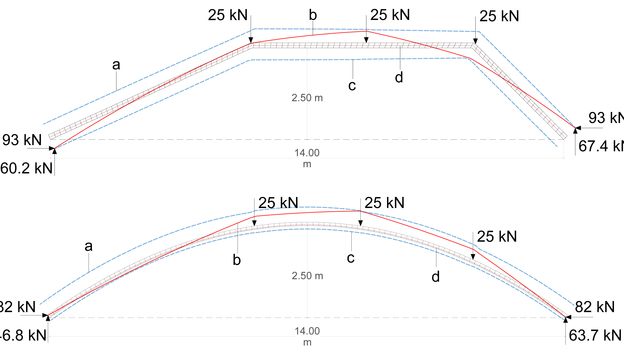Extraordinary architectural examples, like those by the renowned Uruguayan engineer Eladio Dieste, have been built using reinforced masonry. The current sparse use of this construction type can be attributed to a lack of simple structural analysis and design methods, tools and criteria.
Extended Limit Analysis of Reinforced Masonry (ELARM) is a new method for the structural analysis and design of reinforced concrete, reinforced masonry or reinforced composite (masonry and concrete) arched structures. It is implemented computationally to create a flexible design and analysis tool, able to provide immediate graphical and intuitive results. The method is based on limit analysis but takes into account the material’s limited compressive strength and the vault’s cross-sectional bending capacity provided by the reinforcement by virtually increasing the thickness. The plastic theorems are then applied considering the new virtual boundaries of the vault’s intrados and extrados.
ELARM is validated through the comparison of its predictions with the results of load tests on two full-scale composite barrel vaults. The vaults feature a structural system composed of a two-layered tile vault as an integrated formwork for a reinforced concrete layer. They were tested under vertical loading up to failure. Both the vertical and horizontal displacements of the vaults were monitored during the tests. The characterisation of the materials composing the vaults was also carried out to introduce the measured material properties and strengths in the equilibrium equations for the computation of the new virtual thickness.
This paper presents the new structural analysis and design method, its experimental validation and some practical design examples to show the potential of the tool. It offers an intuitive process of design in which shape can be adapted and optimised, also having the material properties and thickness, loads and reinforcement quantity and placement as variable parameters. The presented examples include form-finding and reinforcement optimisation procedures, an equivalent horizontal load for seismic assessment and the analysis of a non-compression-only structure.




